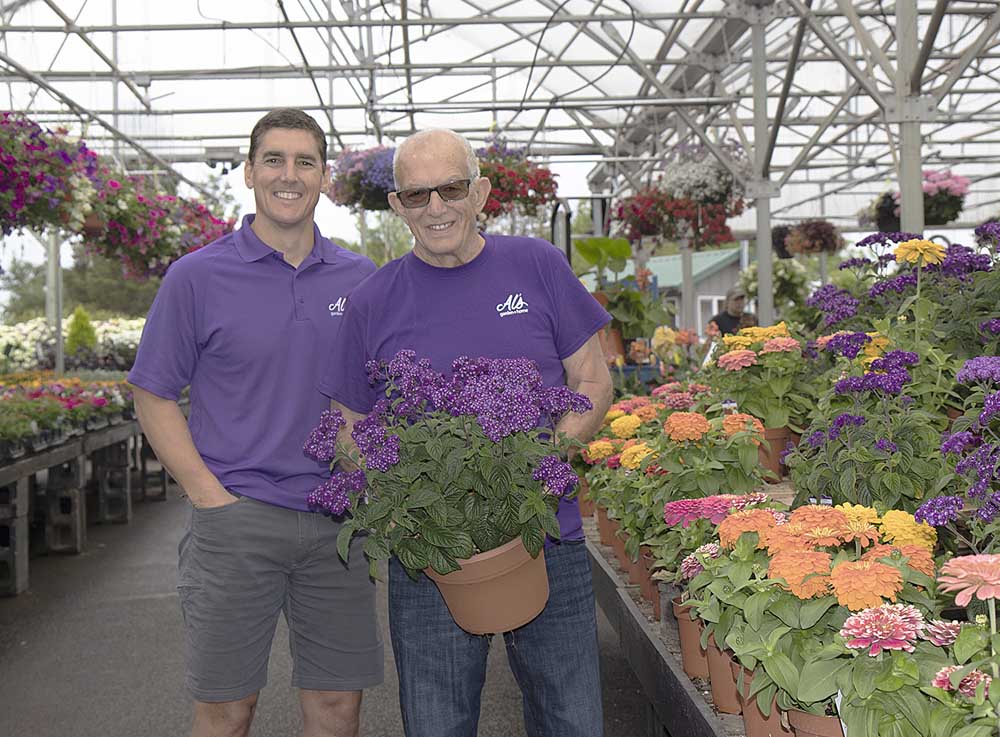Nurseries shattered by virus lockdown fight for survival
Published 2:45 pm Tuesday, April 7, 2020

- Mark Bigej, left, a third-generation nursery manager, with his father, Jack Bigej. Fallout from the COVID-19 virus has caused many orders to be canceled during what is normally the busiest time of the year for nurseries.
SALEM — For nurseries and garden centers across the U.S., April and May are make-or-break months, when 60% to 70% of their income for the entire year is made in a roughly six-week period.
This spring, however, COVID-19 has taken the bloom off the industry.
“The timing could not be worse,” said Jeff Stone, executive director of the Oregon Association of Nurseries.
Stone said OAN worked “exceptionally hard” with Oregon Gov. Kate Brown to keep nurseries operating.
After cattle, nurseries ranked as Oregon’s second-largest agricultural sector in 2019. Treated as an essential service, nurseries are running “Gardening Isn’t Canceled” campaigns, and industry leaders say most nurseries have switched to preorders, drive-thrus and delivery setups.
But the virus is disrupting plant sales.
Customers aren’t buying as many ornamentals and flowers, events that typically buy loads of florals are canceled and the public is avoiding retail outlets. And the industry is dependent on national and international markets that are on hold.
“This is unprecedented,” said Mark Bigej, chief operations officer for Al’s Garden & Home, a third-generation Oregon nursery business with three growing facilities, four garden stores and more than 200 employees. “There have been recessions before, but the onset was slower. You could see them coming. This was so sudden and extreme. We’re scrambling.”
Bigej said customers utilizing curbside pickup are ordering edibles like vegetable starts and berry plants, along with annual flowers “for some brightness and happiness in this hard time.” But the virus has halved Bigej’s sales.
At Egan Gardens in Keizer, owner Ellen Egan is surrounded by flowers that were destined for now-canceled events: about 8,000 geraniums, 12,000 geranium baskets, 2,000 assorted annuals and 500 mixed flower baskets now have no buyers. Egan estimated fundraisers alone make up 20% of her spring sales.
It’s too late to cancel the orders she placed last fall from growers, Egan said. Now, every day, she dumps tray after tray of plant starts.
“It’s awful,” she said. “Our sales are destroyed. And all these plants here need homes.”
The most reliable sales come from commercial landscapers, said Egan: apartment complexes, car dealerships, city parks. But Egan estimates orders from landscapers will drop next year, as many businesses close permanently and others tighten budgets.
Nursery leaders say the “big four” industry sectors — growers, greenhouse operators, retailers and landscapers — have all been hit differently. But the industry is intertwined; when one suffers, many suffer.
Oregon’s $1 billion nursery industry ships about 75% of its stock out of state, said Jim Simnitt, OAN president. When nurseries close in other states or countries, or when markets are significantly disrupted as in New York, it sends ripple effects through the industry, he said.
The industry continues to ship nursery stock between states, but the number of plants is down, according to Aron Asbell, an agent with Gulick Freight Service Logistics, a freight broker.
“I’m still super busy because of logistical hurdles and orders that keep changing,” said Asbell. “But my volume is definitely down.”
Beyond economics, Stone said he’s concerned for the health of aging nursery owners.
“They’re not sideline people,” he said. “They get in and do whatever’s needed. They’re like the people braving checkout lines: heroes.”






